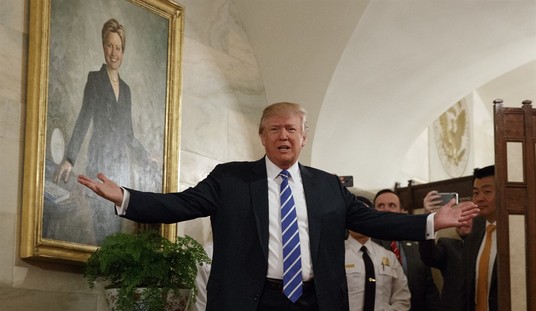Iryna Kalinina, a pregnant Ukrainian woman, became a tragic icon of the toll the war between Ukraine and Russia has taken on the civilian populace.
Kalinina was a 32-year-old woman from Mariupol who sought care at a medical facility. A Russian airstrike pummeled the building on March 9, 2022. The bombing reduced the facility to rubble and killed three people.
Photographs captured the grisly aftermath of the airstrike and showed the young woman being carried out of the debris on a stretcher. Blood covered her body as she shrieked in pain.
After she arrived at another hospital, doctors found that her pelvis had been crushed and her hip detached. “Kill me now!” she cried in despair after realizing she was losing her unborn child. The doctors performed an emergency cesarean section to save the baby, but unfortunately, he showed no signs of life. Kalinina and her husband had planned to name their son “Miron,” which means “peace” in Ukrainian.
Medics fought hard to resuscitate Kalinina, but to no avail. She succumbed to her injuries about 30 minutes later.
Recommended
The war in Ukraine has been in full swing for four years, resulting in massive casualties on both sides.
President Donald Trump is currently working to hammer out a peace deal between Russia and Ukraine that would establish a long-term peace between the two nations. This effort has attracted critics from the left, who seem to be rooting against the Trump administration’s efforts to broker a peaceful settlement to the conflict.
Yet, it appears Trump’s approach is far more likely to stop the killing than former President Joe Biden’s.
Since taking office in January, Trump has been pursuing an end to the war that has claimed the lives of Kalinina and hundreds of thousands of others on both sides of the conflict. Unlike his predecessor, Trump’s objective has been to bring about an end to the killing and suffering by pursuing diplomacy.
He differed from the Biden administration in his willingness to engage with Putin while pressuring Zelensky to take further steps to end the war. Early on, he even blamed Zelensky for supposedly starting the war, referring to him as a “dictator” and accusing him of “gambling with World War III.”
The two leaders famously clashed during Zelensky’s February visit to the White House. The result was the Trump administration partially pausing military aid to Ukraine. Nevertheless, they later worked out their differences, and Trump announced at a July event, “We are going to send some more weapons. We have to. They have to be able to defend themselves. They’re getting hit very hard now.”
President Trump also took a harsher tone with Putin. During an interview with NBC News’ Kristen Welker, Trump stated that he was “pissed” and “very angry” with Putin after he claimed Zelensky is not a legitimate head of state.
Trump recently met with Putin in Alaska. While the meeting did not immediately lead to a peace agreement, both parties indicated that they had made progress before establishing a lasting peace. Days later, Trump met with Zelensky and several other European leaders. The president indicated that there would be a trilateral meeting between the three leaders in the near future.
On the other hand, former President Biden’s approach to the war was less reliant on diplomacy and focused more on helping Ukraine defend itself against Russia’s incursion. He framed the conflict as a battle to defend the international principles of sovereignty and democracy. Biden stressed that if the world “stand[s] by in the face of such blatant attacks on liberty and democracy and the core principles of sovereignty and territorial integrity,” it would reap “worse consequences” over the long term.
Biden’s sentiments manifested in policies aimed at building a coalition to isolate Russia while continually sending military aid to Ukraine. He gathered NATO and European Union allies to impose “unprecedented” sanctions on Russia. The US led 50 nations in delivering heavy weapons, including tanks, artillery, rockets, and air defenses, to help Kyiv hamper Moscow’s advance.
Biden committed to supporting Ukraine over the long term, telling Zelensky, “I will not walk away from Ukraine, and neither will the American people.”
Both Biden and Trump have refused to send troops to intervene in the war. Biden rejected the idea of establishing a no-fly zone in Ukraine.
To put it simply, Biden’s objective was to ensure that Ukraine did not lose the war. Trump’s objective is to end the war, which is why his approach is far more desirable than his predecessor’s.
Trump’s diplomatic strategy is far more likely to get a peaceful solution than Biden’s. Indeed, Biden’s approach merely extended the duration of the war, which meant even more dead people on both sides. The president has repeatedly emphasized that he “wants the killing to stop.”
Trump has shown that he is willing to apply pressure to both Zelensky and Putin to come to the negotiation table. The reality is that this is the only way to end the war and save lives. The war has been going on for four years without an end in sight. This is because the US under Biden was more concerned with keeping the war going than with figuring out how to reach an agreement. If this war is going to conclude in the near future, it will require diplomacy, not more military aid.

























